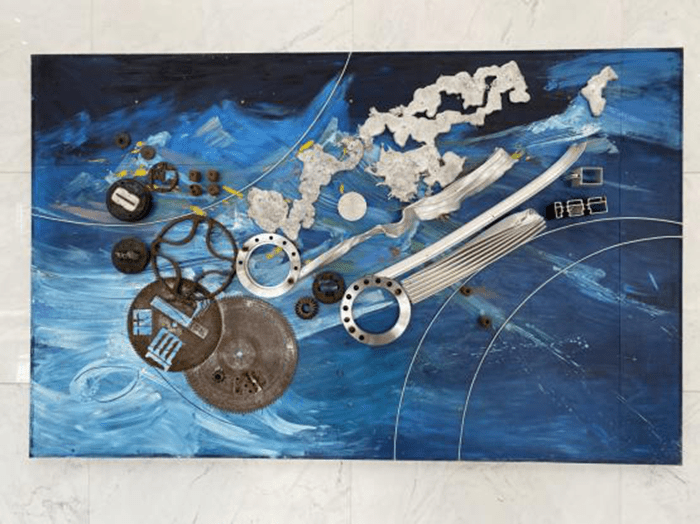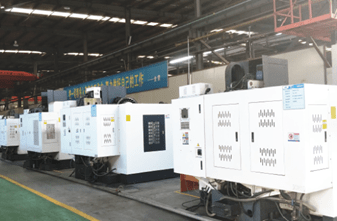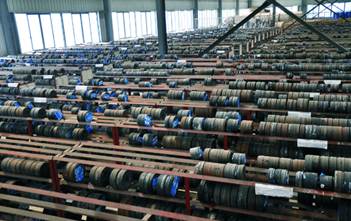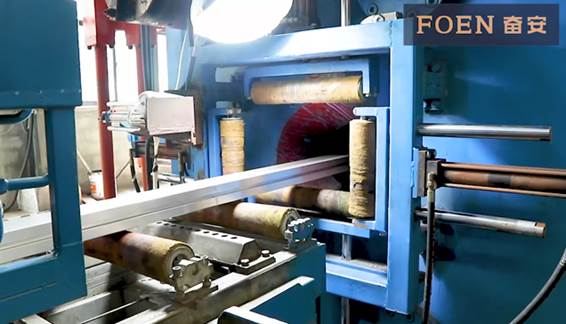In recent years, with the large-scale investment in infrastructure and the rapid advancement of industrialization in China, the output and consumption of the whole industry of aluminum profiles are growing rapidly, and China has become the world’s largest aluminum profile production base and consumer market.After nearly 10 years of rapid growth, China’s aluminum profile industry has entered a new stage of development, and has shown many new development trends.
Moreover, with the rapid development of construction, transportation, automobile and solar energy and LED industries, the requirements for high precision and high performance of aluminum alloy extrusion products are increasing day by day, and the profile section shape is complicated and diversified, and there are many deficiencies in the design of conventional and common forms.Therefore, to get high quality profiles, we must constantly learn and accumulate in production and life, and constantly transform and innovate.
Mould design is an important link. Therefore, it is necessary to analyze the mold design of extruded profile systematically and solve the problems step by step through production practice.
6 key points of aluminum profile mold design
1. Size analysis of aluminum extruded parts
The size and deviation of the extruded parts are determined by the die, extrusion equipment and other relevant process factors.Among them, the change of mold size has a great impact, and the reasons that affect the change of mold size are: the elastic deformation of the mold, the temperature rise of the mold, the material of the mold and the manufacturing precision of the mold and the wear of the mold.
(1) the selection of the tonnage of the aluminum extruder
The extrusion ratio is a numerical representation of the difficulty of the mold to achieve extrusion. Generally speaking, the extrusion ratio between 10-150 is applicable.The extrusion ratio is lower than 10, the mechanical properties of the product are low;On the contrary, the extrusion ratio is too high, the product is prone to surface roughness or Angle deviation and other defects.Solid profiles are often recommended extrusion ratio in about 30, hollow profiles in about 45.
(2) Determination of external dimensions
The external dimensions of the extrusion die refer to the diameter and thickness of the die.The dimensions of the mold are determined by the size, weight and strength of the profile section.
2. Reasonable calculation of extrusion die size
When calculating the die hole size, the main consideration by extrusion of aluminum alloy chemical composition, the shape of the product, the nominal dimension and tolerance, extrusion temperature, and mold material and squeezed under the temperature alloy, linear expansion coefficient of product based on the characteristics of the geometry of cross section, and its changes during stretching, factors such as the size of the extrusion pressure and the elastic deformation of the die.
For the profiles with large wall thickness difference, the thin-walled parts and the sharp-edged areas that are difficult to form should be appropriately increased in size.
For the die holes of flat and thin wall profiles and wall profiles with large width to thickness ratio, the size of the trams can be designed according to the general profiles, and the size of the web thickness, in addition to the factors listed in the formula, also need to consider the elastic deformation, plastic deformation, overall bending, distance from the center of the extrusion cylinder and other factors.In addition, extrusion speed, traction device and so on also have a certain effect on the size of die hole.
3. Reasonable adjustment of metal flow speed
The so-called reasonable adjustment is to ensure that each particle on the cross section of the product should flow out of the die hole at the same speed under the ideal state.
As far as possible using porous symmetrical arrangement, according to the shape of the profile, the difference of the wall thickness of each part and the difference of the circumference and the distance from the center of the extrusion cylinder, the design of different length sizing belt.In general, the thinner the wall thickness of a section, the larger the circumference, the more complex the shape, the farther away from the center of the extrusion cylinder, the shorter the sizing belt here should be.
When the sizing belt is still difficult to control the flow rate, the shape is particularly complex, the wall thickness is very thin, far from the center of the part can be used to promote the flow Angle or guide cone to accelerate the metal flow.On the contrary, for those parts with much thicker walls or very close to the center of the extrusion cylinder, an obstruction Angle should be used to supplement the obstruction to slow down the flow rate here.In addition, the process balance hole, the process allowance, or the use of the front chamber die, the guide die, change the number, size, shape and position of the split hole to adjust the metal flow rate.
4. Ensure sufficient mold strength
Because the working condition of die is very bad during extrusion, the strength of die is a very important problem in die design.In addition to the reasonable arrangement of the location of die holes, the selection of suitable die materials, the design of reasonable die structure and shape, accurate calculation of extrusion pressure and check the permissible strength of each dangerous section is also very important.
At present, there are many formulas for calculating extrusion force, but the modified Beerling formula still has engineering value.The method of upper limit solution of extrusion pressure also has good application value, and it is easier to calculate extrusion pressure by using empirical coefficient method.
As for the mold strength check, should be carried out according to the type of product, mold structure, etc.General flat die only need to check the shear strength and bending strength;The shear, bending and compressive strength of tongue and planar split die should be checked, and the tensile strength of tongue and needle should also be considered.
One of the fundamental problems in strength checking is to choose the proper strength theory formula and the more accurate allowable stress.In recent years, the finite element method can be used to analyze the force and check the strength of the especially complex die.
5. Width size of working belt
It is much more complicated to determine the working zone of the splitter composite die than that of the half die, not only the thickness difference of the profile wall and the distance from the center, but also the shielding of the die hole by the splitter bridge must be taken into account.In the die hole under the split bridge, the work belt must be thinned due to the difficulty of metal flow.
When determining the work zone, the first to find out the most thin wall thickness in triage bridge profile in the metal flow resistance of the largest local, the minimum work twice as the wall thickness, wall thickness thicker or metal is easy to achieve, work with due consideration of thickening, generally according to certain proportion relationship, plus easy flow of the revised.
6. Structure of die hole empty knife
The die hole hollow cutter is a cantilever supporting structure at the outlet of the die hole working belt.Profile wall thickness T ≥2.0mm, can be used to process easy straight empty cutter structure;When t<2mm, or with a cantilever, can use an oblique blank knife.
Two. Common problems in mold design
1. Role of secondary welding chamber
Extrusion die plays an important role in the extrusion of aluminum profiles, which directly affects the quality of extruded products.However, in the actual production, the design of the extrusion die depends more on the experience of the designer, and the quality of the die design is difficult to guarantee, so it is necessary to try and repair the die for many times.
According to the deficiencies of die design, an optimal design scheme of setting two welding chambers in the lower die was put forward, which made up for the defects of incomplete feeding in die processing, avoided the defects of opening, closing and shape difference before and after material release caused by insufficient feeding, and effectively solved the problem of uneven velocity distribution in the design.Therefore, in the optimization scheme, the temperature and stress distribution on the section of the profile are more uniform, and the material is greatly improved.
2. The role of secondary diversion
In the design of extrusion die, secondary diversion is used for solid profiles with large wall thickness difference.Example: The initial mold design is composed of ordinary mold and die pad. It is not ideal for the first time. The Angle is small, and the thin-walled part is ultra-thin and ultra-small.Mold repair is not ideal even if the thin-walled part is enlarged and the working belt is lowered.
In order to solve the problem of uneven velocity distribution in the initial mold design, the design of guide plate was adopted for the second time, and the optimal design scheme of setting two levels of guide in the mold was put forward.
To be specific, the thin wall is directly directed, the thick wall part is spread 30 degrees in the outlet width, and the die hole size of the thick wall part is slightly increased in size, and the 90 degree Angle of the die hole is pre-closed and opened to 91 degrees, and the sizing working belt is also appropriately modified.
Post time: Mar-18-2021









